Occupational Environment Monitoring at the Sawdust Pellet Manufacturing Plant
99,000 ₫
Note: The above price is calculated for one sample, and the price may vary depending on the area of the environment to be monitored and market fluctuations. For more accurate pricing support, please refer to the quotation table or contact our consulting staff directly.
Occupational environment monitoring at a sawdust pellet manufacturing plant is a process of collecting, analyzing, and evaluating workplace factors that may harm workers’ health.
Table of Contents
Toggle1. Overview of Sawdust Pellet Manufacturing Plant
a. What is a sawdust pellet manufacturing plant?
Manufacturing plant for sawdust pellets is a specialized industrial facility that processes sawdust into sawdust pellets. Sawdust is a type of waste generated from sawing and wood processing in the wood industry. Instead of consuming energy and resources to dispose of sawdust, the sawdust pellet manufacturing plant utilizes this waste and converts it into valuable pellets.
During the production process, sawdust is pressed and compacted into uniform pellets using pressure and natural or chemical binders. Sawdust pellets have good combustibility and can be used as an alternative fuel for traditional energy sources such as coal, oil, or gas. Additionally, sawdust pellets can also be used as raw material in brick production, wood chip manufacturing, or in the thermal power industry.

b. Production stages in a sawdust pellet manufacturing plant
The production stages in a sawdust pellet manufacturing plant may include the following steps:
- Receiving and storing sawdust: Sawdust is collected from the sawing or wood processing operations and transported to the plant. It is then stored in warehouses for the next stage.
- Processing and preparing raw materials: Sawdust is treated to remove impurities and unwanted materials. It is then mixed with natural or chemical binders to create a uniform mixture.
- Pellet pressing and compaction: The sawdust and binder mixture is fed into a pressing or compacting machine. Pressure is applied to form sawdust pellets, ensuring the desired density and durability.
- Drying: After pellets are formed, they may need to be dried to remove moisture and ensure the quality of the final product.
- Packing and storage: Finished sawdust pellets are packaged appropriately and prepared for storage or shipment to sales points or end customers.

c. Machinery used in a sawdust pellet manufacturing plant
In a sawdust pellet manufacturing plant, the following types of machinery may be used:
- Sawdust grinder: Used to finely grind sawdust into small particles and achieve the necessary fineness for pellet pressing.
- Pellet press machine: Used to compress the sawdust-binder mixture into pellets, applying pressure to achieve the desired density and durability.
- Drying machine: Used to remove moisture from the pellets after formation, improving quality and durability.
- Packing machine: Used to pack sawdust pellets into suitable packaging. This may include measuring, filling, bagging, or boxing as required.
- Quality control machines: Used to ensure that pellets meet quality standards and market requirements, including strength testers, density testers, moisture analyzers, and other inspection devices.
- Waste processing machinery: Used to handle waste and recycle by-products generated during production.

d. Occupational diseases workers may face in sawdust pellet manufacturing plants
Workers in sawdust pellet manufacturing plants may be exposed to potential environmental hazards that could cause occupational diseases. Common occupational diseases in this work environment include:
- Respiratory diseases: Long-term exposure to sawdust dust can cause respiratory problems such as pneumonia, asthma, sinusitis, and other respiratory illnesses.
- Skin diseases: Contact with sawdust or binders can cause skin irritation, dermatitis, itching, and other skin problems.
- Eye diseases: Exposure to sawdust dust can irritate and damage the eyes, causing infections, bacterial problems, eye pain, tearing, conjunctivitis, and dryness.
- Ear diseases: Noise from machinery may lead to hearing issues such as hearing loss, tinnitus, and other ear-related problems.
- Spinal and musculoskeletal disorders: Industrial work activities can place strain on the spine and muscles, causing back pain, neck pain, and joint problems.
To prevent occupational diseases, sawdust pellet manufacturing plants should implement health and safety measures, including providing personal protective equipment, ensuring safe work procedures, controlling dust and noise, maintaining good ventilation, training workers on occupational safety and health, and regularly monitoring and evaluating employees’ health.

e. Common types of sawdust pellets on the market
On the market, there are several types of sawdust pellets used for different purposes, including:
- Standard sawdust pellets: Produced from natural sawdust, usually from pine or other trees. They are typically cylindrical with varying diameters and lengths.
- Biological sawdust pellets: Made from biologically treated sawdust and used as a renewable, environmentally friendly fuel source.
- Heat-generating pellets: Designed to provide heat for heating systems and thermal houses, made from low-moisture, tightly compacted sawdust.
- Pellets for dryers and boilers: Used as primary material in dryers and boilers to produce heat efficiently, typically low-moisture and tightly pressed.
- Pellets for ovens and baking: Suitable for use in ovens and bread baking, with fast-burning properties that generate sufficient heat for cooking.
- Pellets for livestock: Some pellets are used in animal husbandry, providing warmth and odor absorption for animals such as chickens, pigs, or horses.
2. Overview of occupational environment monitoring services
a. What is occupational environment monitoring in sawdust pellet manufacturing plants?
Occupational environment monitoring (or workplace environmental measurement) in sawdust pellet manufacturing plants involves collecting, evaluating, and analyzing measured indicators of workplace environmental factors to implement timely mitigation measures, minimize environmental harm to workers’ health, and prevent occupational diseases. Occupational environment monitoring is a mandatory requirement for sawdust pellet manufacturing plants.
Monitoring plays a vital role in caring for, protecting, and enhancing workers’ health, as workers are the primary human resource that directly generates profit for the enterprise. Workers regularly exposed to risks or occupational hazards beyond allowable standards may suffer health impacts and occupational diseases.
REGISTER FOR OCCUPATIONAL ENVIRONMENT MONITORING SERVICE
b. Nam Viet’s occupational environment monitoring program
Nam Viet’s occupational environment monitoring program is developed by engineers specialized in occupational safety and environmental protection. Aimed at ensuring workers’ health and safety, the program uses modern measurement methods to monitor air quality, water, microclimate factors, physical elements, dust, and more in the workplace. This program is crucial for maintaining a safe working environment and protecting workers’ health.
Furthermore, Nam Viet’s monitoring program also plays an important role in researching and developing new solutions to improve workplace environmental quality. With the dedication and professionalism of its monitoring experts, Nam Viet’s exclusive monitoring program has become a breakthrough in occupational safety and environmental management in Vietnam.

c. Standardization in occupational environment measurement processes
Standardization in Nam Viet’s occupational environment measurement process is critical to ensuring the quality of results. To guarantee accuracy and reliability, the program follows recognized standards and procedures from Ho Chi Minh City Department of Health. This ensures that the collected data can be used reliably for evaluating workplace environments and making decisions to improve environmental safety and protect workers’ health.
These standardized procedures also ensure that measurements are conducted by highly qualified monitoring specialists with many years of experience, allowing managers and experts to trust An Toan Nam Viet’s results and make accurate, valuable decisions for worker and environmental safety.
By applying standardization in environmental monitoring processes, Nam Viet demonstrates its commitment to a safe working environment and protection of workers’ health, while also contributing to the development and enhancement of occupational safety and environmental management in Vietnam.
d. Reporting monitoring results for sawdust pellet manufacturing plants
Occupational environment monitoring results are prepared according to Form No. 04, Appendix III issued with Decree 44/2016/ND-CP and prepared in 2 copies: one for the workplace that contracted the monitoring service and one retained by the monitoring organization.
The retention period for occupational environment monitoring records is indefinite, as required by law.

e. Frequency of occupational environment monitoring as required by law
According to Clause 2, Article 18 of the Occupational Safety and Health Law 84/2015/QH13, employers must conduct workplace environment monitoring to assess harmful factors at least once a year.
f. Deadline for submitting occupational environment monitoring reports as required by law
The deadline for submission is before December 31 each year. Enterprises must submit occupational environment monitoring reports to the Department of Health at the locality where the production or business facility is headquartered and where employees work.
If there are changes in technology or production processes, or during renovations or upgrades that may introduce new hazardous factors affecting workers’ health, enterprises must update occupational hygiene records regarding harmful factors requiring workplace environment monitoring.
g. Penalties for employers violating occupational environment monitoring regulations
According to Article 27 of Decree No. 12/2022/ND-CP dated January 17, 2022, on administrative penalties in labor, social insurance, and Vietnamese workers working abroad under contract:
- Clause 2: Fines ranging from 2,000,000 – 5,000,000 VND for employers who fail to publicly inform employees at the monitored workplace and at inspection/evaluation sites about results of occupational environment monitoring and hazard management.
- Clause 3: Fines ranging from 20,000,000 – 40,000,000 VND for employers who do not conduct occupational environment monitoring to control health impacts on workers as required by law.
- Clause 4: Fines ranging from 40,000,000 – 60,000,000 VND for employers collaborating with monitoring organizations to commit fraud in occupational environment monitoring activities but not reaching the level of criminal liability.
3. Harmful environmental factors for workers working in sawdust pellet manufacturing factories
Workers working in sawdust pellet manufacturing factories may be exposed to several harmful environmental factors. Below are some potential environmental factors that can affect the health of workers in the sawdust pellet manufacturing industry:
- Wood dust: The process of sawdust pellet manufacturing can generate wood dust and sawdust. Workers exposed to wood dust may experience respiratory problems, such as bronchitis, asthma, and pneumonia.
- Cutting fumes and welding fumes: During processing and production, the use of cutting and welding machines can generate fumes containing harmful chemical compounds. Prolonged inhalation of these fumes can cause irritation to the skin, eyes, respiratory system, and nervous system.
- Noise: Machinery in sawdust pellet manufacturing factories often produces high noise levels. Loud and continuous noise can affect hearing, cause stress, sleep disturbances, and loss of concentration.
- Hot working conditions: The sawdust pellet manufacturing process often involves high temperatures, especially during compression. Hot working environments can cause heat stress, fatigue, dehydration, and heat-related illnesses.
- Fire and explosion risk: The compression process of sawdust can generate methane gas and wood dust, increasing the risk of fire and explosion. Unsafe conditions and non-compliance with safety regulations can lead to accidents and explosions.
- Chemicals: Some chemicals may be used in the sawdust pellet manufacturing process, such as binders or treatment substances. Long-term exposure to these compounds can cause irritation to the skin, eyes, respiratory system, and digestive system.
REGISTER FOR OCCUPATIONAL ENVIRONMENTAL MONITORING SERVICE
4. Measures to improve the working environment in sawdust pellet manufacturing factories
To improve the working environment in sawdust pellet manufacturing factories and protect workers’ health, the following measures can be applied:
- Effective dust extraction system: Ensure strong and efficient dust extraction systems in machinery and working positions. The dust extraction system must be designed and maintained to remove wood dust and sawdust from the air.
- Ensure good ventilation: Improve the ventilation system in the factory to ensure good air circulation and reduce the concentration of wood dust and harmful substances.
- Use of personal protective equipment: Ensure that workers are provided with and fully use personal protective equipment such as masks, safety glasses, gloves, and protective clothing to protect them from dust, cutting fumes, welding fumes, and other harmful substances.
- Occupational safety training and supervision: Provide occupational safety training for workers, including proper use of personal protective equipment, safe working procedures, and accident prevention measures.
- Noise control: Apply measures to reduce noise at the source, such as using soundproofing devices, noise reduction equipment, and limiting exposure time to noise.
- Adjust working temperature: Ensure comfortable working conditions with appropriate temperature and sufficient ventilation. If necessary, provide cooling equipment such as fans, air conditioners, or cooling clothing.
- Waste management: Ensure proper waste management and treatment to avoid causing environmental pollution and potential health risks to workers.
- Periodically organize occupational environmental monitoring in factories, collect and analyze harmful factors for workers, and then adjust to reduce hazards to prevent occupational diseases for them.
5. Benefits of periodic environmental monitoring in sawdust pellet manufacturing factories
An Toan Nam Viet provides businesses with excellent benefits when using occupational environmental monitoring services in accordance with Decree 44/2016/ND – CP on the management and control of harmful factors in the working environment affecting workers.
- Businesses can proactively control harmful factors in workshops or factories.
- Receive consultation and recommendations on measures to minimize harmful factors and improve the quality of the working environment.
- Indirectly protect human resources, the main factor in the development process of businesses.
- Minimize the impact of occupational diseases on human health, thereby reducing future medical treatment costs.
- Workers’ health is improved, leading to better product quality as well as stable and maintained output.
- Comply with regulations on occupational safety laws, avoiding legal risks.
- Create reputation and professionalism in all aspects, thereby enhancing the brand value of businesses.
The environmental monitoring service of Nam Viet is the solution to minimize the impact of occupational diseases, contributing to creating a healthy and high-quality working environment.

6. National occupational environmental monitoring center
Occupational environmental monitoring center of Nam Viet is a professional unit in monitoring and measuring the quality of the working environment throughout all provinces and cities in Vietnam. With a team of experienced monitoring specialists, the center uses modern measuring equipment to ensure accuracy and reliability.
In addition to providing monitoring services, the center also supports customers in planning, handling, and monitoring occupational environmental issues. With the motto “customers are the center,” the center cares about customer satisfaction, meets all customer needs, and is committed to offering the best solutions for businesses.
REGISTER FOR OCCUPATIONAL ENVIRONMENTAL MONITORING SERVICE
With investments in technology, equipment, and human resources, the monitoring center of Nam Viet has been and is becoming one of the reputable units in the field of occupational environmental monitoring in Ho Chi Minh City with the following objectives:
- We always value brand reputation and the quality of our service products.
- We provide customers with the best possible and most suitable solutions.
- Together with a team of Masters and Engineers with extensive experience and expertise, we aim to protect the environment and bring benefits to businesses.
- By working with the Nam Viet Environmental Monitoring team, businesses will receive professional services from experts in the monitoring field and also receive the best cost advantages.
The process of implementing occupational environmental monitoring at Nam Viet includes the following basic steps:
- Before conducting occupational environmental monitoring, our company always ensures that machinery and equipment serving environmental monitoring are adjusted and calibrated in accordance with legal regulations.
- Strictly and fully implement the occupational environmental monitoring process committed to the Department of Health.
- Honestly report occupational environmental monitoring results to employers.
- In cases where occupational environmental monitoring results are unsafe for workers, Nam Viet company will support proposing remedial solutions, and the labor facility will implement the following:
- Implement measures to improve working conditions to minimize the impact of harmful factors and prevent occupational diseases.
- Organize health examinations to detect early occupational diseases and job-related illnesses for workers in unsafe working environments.
- Provide physical benefits for workers in accordance with labor laws.

7. Occupational environmental monitoring service quotation
To help businesses carry out occupational environmental monitoring in a professional and effective manner, Nam Viet provides customers with a high-quality and reasonably priced occupational environmental monitoring service quotation.
- Our monitoring quotation provides detailed information on the prices of the monitoring services we offer. This includes costs related to transportation, measurement, analysis, and reporting of results. Customers can be fully assured of the accuracy and reliability of the monitoring reports we provide.
- We are committed to always offering the most competitive and reasonable prices in the market, and we are always ready to provide consultation and promptly answer any questions about monitoring services in the most professional manner.
- With the monitoring quotation of Nam Viet, customers can easily choose service packages that suit their needs. We are committed to bringing customers the highest satisfaction with professional service quality.
No comments yet

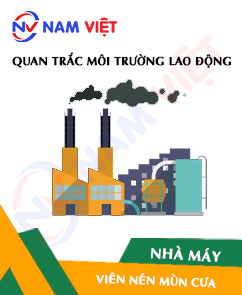
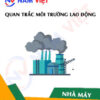
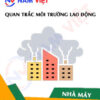





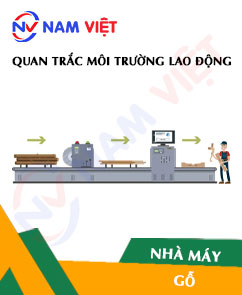
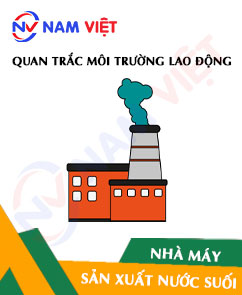

Review Occupational Environment Monitoring at the Sawdust Pellet Manufacturing Plant
There are no reviews yet.